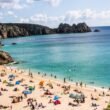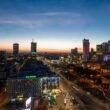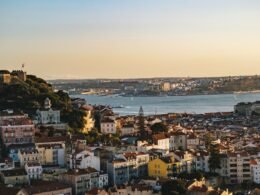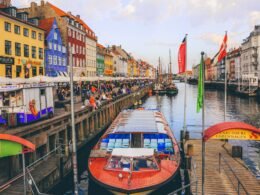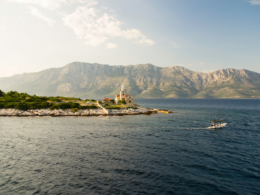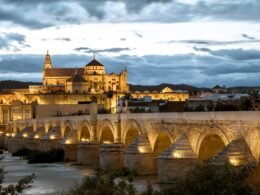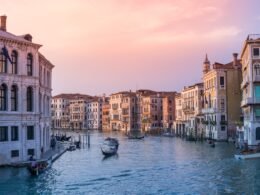Located in northern Europe, Norway is one of the most beautiful countries in the world.
Norway has five regions: Northern Norway, Trøndelag, Western Norway, Southern Norway, and Eastern Norway, each more stunning than the next.
Home to fjords, mountains and glaciers, Norway is a country that boasts spectacular natural beauty and is a great place to plan and experience a road trip.
If it’s your first time in Norway, one of the best ways to experience the best of what it has to offer is to embark on an eight-day road trip. But before you do that, here are a few things you need to know.
How to Get Around Norway
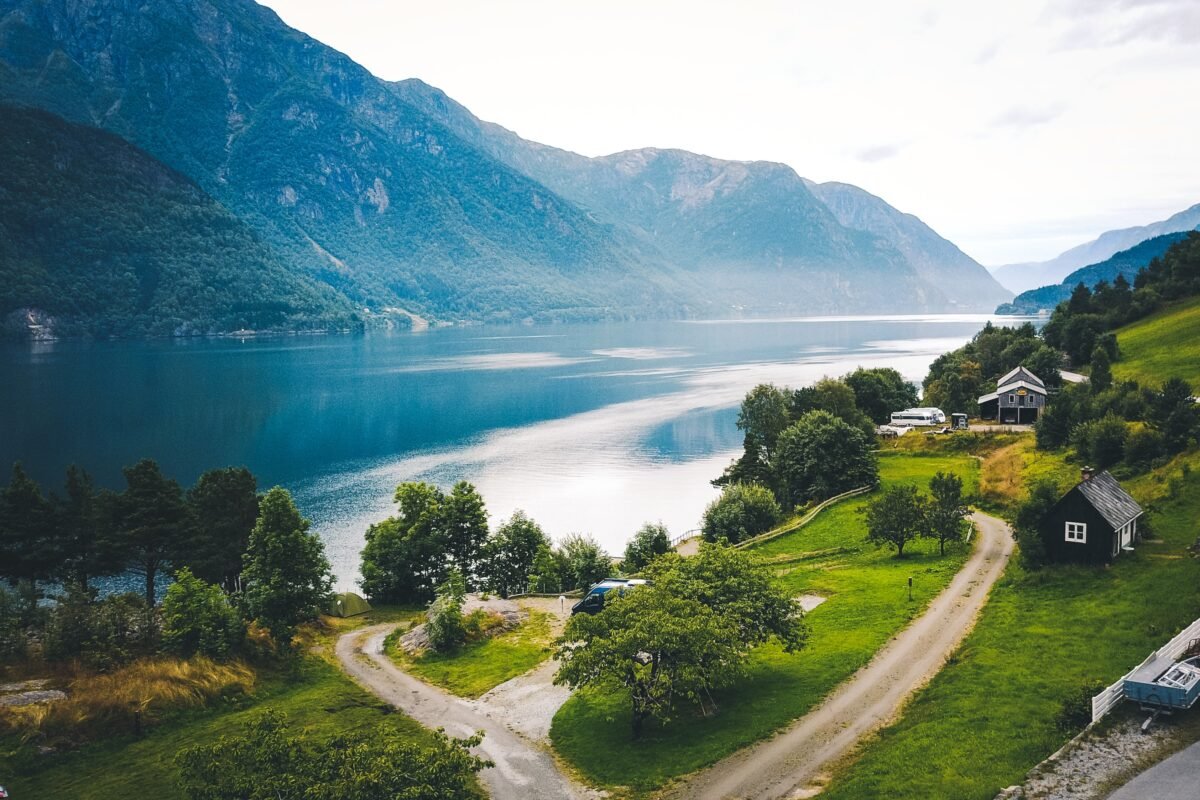
There is an abundance of public transport options around the country, including trains, buses, planes, ferries, and more.
This itinerary will include trains and rental cars.
By train
Norway has a well-developed network of award-winning scenic railway lines that connect the major cities.
Traveling by train is one of the best ways to get around Norway simply because of the amazing views, as many routes pass through jaw-dropping landscapes of fjords, lakes, mountains, and countryside. The most famous line is the Bergen Railway, which you will be experiencing during this eight-day itinerary.
By car
Traveling by car is a popular way to get around Norway as it allows you to travel at your own pace, stopping at all the marvelous sights along the way.
However, it is easy to underestimate distances and driving times in Norway. The traffic is relatively light on motorways and roads, so you shouldn’t get stuck in traffic!
While driving in Norway, you can expect picturesque views and breathtaking natural beauty around every turn.
What to Know Before You Go
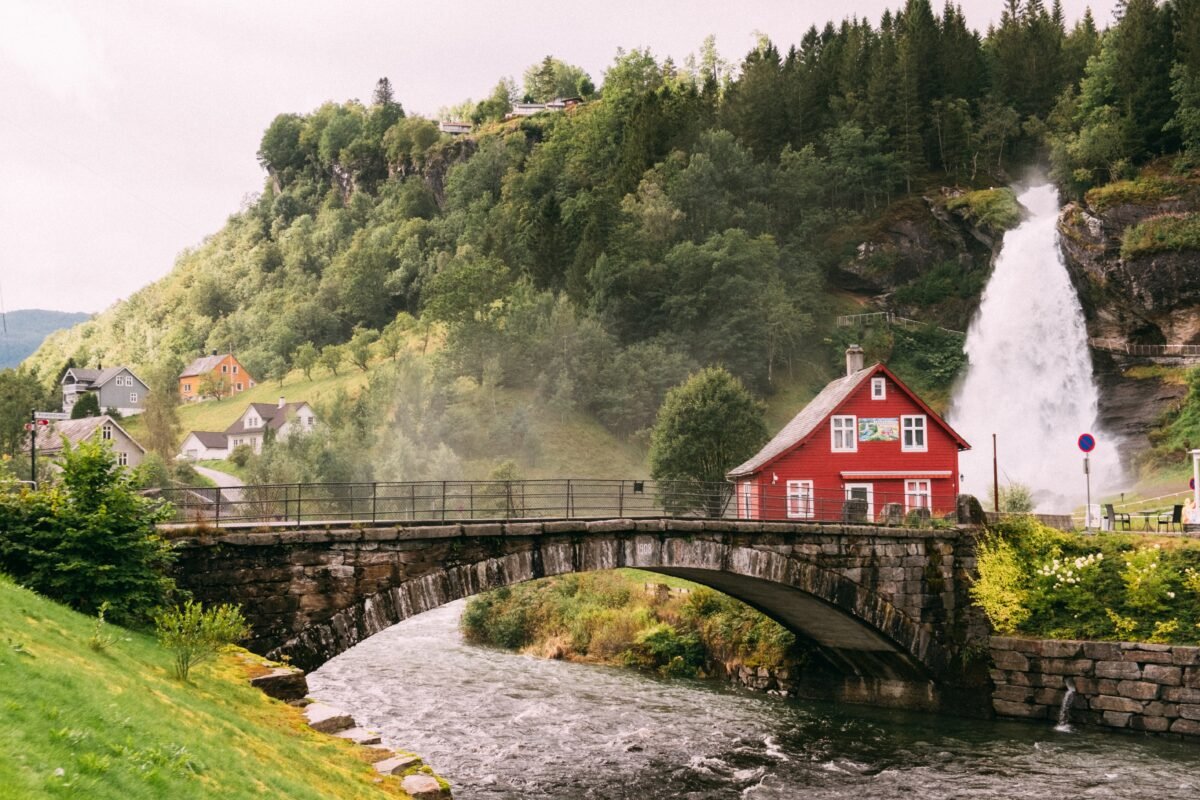
Before you embark on a road trip around Norway, there are a few things you need to know, including
Currency
Although Norway is in Europe, it’s not part of the European Union. Therefore, the currency in Norway is the Norwegian Krone.
That being said, cash isn’t common in Norway, and some places don’t accept it altogether. So don’t bother exchanging your local currency for kroner. Instead, use your credit card when making purchases.
Safety
Norway is a safe country with low crime rates. However, like most countries, petty crime is common in Norway. The best thing to do is be vigilant and keep an eye out for suspicious people.
Language
The national language of Norway is Norwegian. However most people in Norway also speak English, but it’s always appreciated to learn the basics of the language of the country you’re visiting.
Days & nights
In Norway, the days are long, and the nights are short. If you’re planning your road trip during June, July or August, expect the sun to set around 10 pm and rise shortly after 4 am.
Food
Food is expensive in Norway. One of the best things to do if you’re on a budget is to pack non-perishable foods from your home country and shop at low-cost Norweigan supermarkets (Rema 1000 and Kiwi).
If you get complimentary breakfast at your accommodation, another tip is to take food (bread, muffins etc.) to snack on during the day.
Water
The water is extremely safe to drink, so you don’t have to buy water. One of the best things to do is to bring a reusable water bottle to fill up during the day.
Driving
People drive on the right-hand side of the road in Norway, which is good to know beforehand, especially if you’re coming from a left-handed side-of-the-road country, such as the UK, New Zealand or Australia.
Norway has the highest petrol prices in the world, which is one of the reasons why this road trip itinerary includes a couple of train journeys.
There are many toll roads throughout this Norway itinerary. Rental cars come equipped with an AutoPass Device, which will automatically track all of the tolls you rack up and you pay when you return the vehicle.
The roads in Norway are very windy. If you don’t usually get motion sickness, you might on these roads!
Train tickets
The best thing to do, especially on this itinerary, is to book your train tickets in advance. In Norway, you can purchase your train tickets up to three months in advance, and they are a lot cheaper the earlier you book.
The Best Time to Visit Norway

Norway is a beautiful country to visit any time of year. But depending on what you want to get out of your holiday, certain months may be better suited for you than others.
High season: mid-June to mid-August
Summer is the best time of year to experience hiking and outdoor activities. Since most of this eight-day Norway itinerary focuses on outdoor activities, summer is the best time to visit.
The temperatures during the summer months range from 20-26 degrees Celsius, and they are the best time of year for sunshine and great weather.
In summer, the sun doesn’t set until 10 pm and rises again at 4 am.
Low season: October to April
October to April is the best time to visit Norway to see the Northern Lights. However, it’s the coldest time of year, and because of this, most places are shut.
During these months, you’ll experience the least amount of daylight, averaging six to eight hours daily.
Now that you have everything you need to know before booking your flight, here is the ultimate eight-day Norway itinerary taking you to all the country’s must-see places.
Day 1: Arrive in Oslo
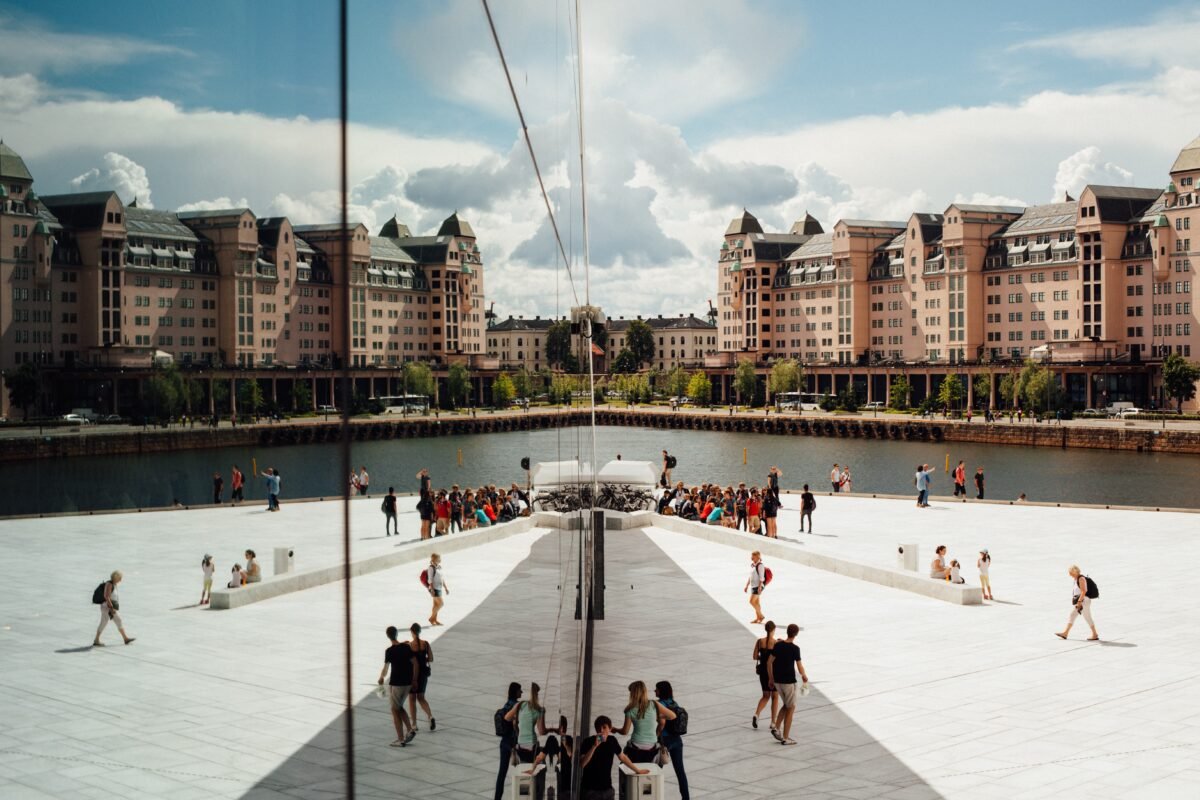
Start your eight-day Norway adventure by arriving in its beautiful capital and largest city, Oslo.
The best thing to do is book a hotel in the city centre, so you’re right in the action and can walk everywhere without using public transport.
Depending on what time you arrive, you can get to your hotel, drop off your things and wander around the streets to get your bearings. If you arrive in the evening, the best thing to do is get a good night’s rest to be refreshed and start exploring Oslo the next day.
Day 2: Explore Oslo

Wake up bright and early, fill yourself up with breakfast at your accommodation and get ready for a day of exploring beautiful Oslo.
Located on the country’s southern coast at the head of Oslofjord, Oslo is known for its green spaces and wonderful museums.
Some of the best things to do on your second day in the capital city include
Oslofjord Cruise
Start your day with a cruise to the Bygdøy Peninsula with Oslofjord Cruise.
Along the way, you’ll cruise through narrow sounds, deep bays and a maze of islands dotted with quaint summer homes.
One of the most unique ways to see the city and Bygdøy Peninsula is hopping on a cruise, which is a must-do while in Oslo.
Urban Sauna
One of the best things to do in Oslo is experience an urban sauna. Oslo’s harbour has a number of places where you can heat up besides the coals.
Although it may seem silly to hop in a sauna during summer, the experience must be had, and you can jump in the fjord to cool off afterwards!
Two of the best places to sizzle in an urban sauna include
- SALT: Where you can relax in water-filled barrels
- KOK: A floating sauna with stunning fjord views
Viking Ship Museum
One of the most popular museums to visit in Oslo is the Viking Ship Museum.
An arm of the University of Oslo’s Cultural History Museum, the Viking Ship Museum boasts finds from four different Viking burial sites around the Oslofjord.
In the museum, you can see the Oseberg Ship, a 9th-century burial ship that was excavated in 1904-1905 and is now like new. Other ships in the museum include Tune and Gokstad, together with all of the artefacts found buried with them, such as beds, tent components, wood carvings and more.
Oslo Opera House
In the afternoon, head to one of Scandinavia’s most iconic buildings, the Oslo Opera House.
Designed to resemble a glacier rising out of the fjord, the Oslo Opera House is a sight to behold. One of the best things to do is walk on top of its roof for an architectural experience and enjoy sweeping views of the city and fjords.
Day 3: Oslo to Bergen

After staying in and exploring the capital for two days, it’s time to hop on one of the most scenic train journeys in the world, the Bergen Railway.
Book your tickets in advance and board the 8:25 am train so you can reach Bergen at 2:55 pm with a couple of hours to explore the city.
The six-hour train journey will take you through some of the most dramatic landscapes you’ll ever see, making it one of the most memorable experiences of your trip to Norway.
Since the sun doesn’t set until around 10 pm during the summer, when you arrive in Bergen at around 3 pm, you’ll still have seven hours of sunshine to enjoy.
Some of the best things to do in Bergen include
Mount Ulriken
Mount Ulriken is the highest of the seven mountains around Bergen. At 643 metres tall, you can hike up the mountain, but it takes around four to five hours to complete. Instead, you can take the Ulriken cable car up and down the mountain to enjoy the breathtaking 360-degree views over the city at the top.
Explore the waterfront
After experiencing the glorious Mount Ulriken, one of the best things to do in Bergen is to wander along the waterfront.
Surrounded by mountains and fjords, the waterfront is one of the most breathtaking sights in Bergen and is home to colourful wooden houses dating back to the 1700s.
Bergen Fish Market
Being a seaside city, one of the best things to do in Bergen, especially after a day of exploring, is to grab some fish for dinner at the Bergen Fish Market.
Dating back to the 1200s, the Bergen Fish Market is a must-see on your trip.
Day 4: Bergen to Odda

Today is the day to get up early, pick up your rental car and drive along some of the most beautiful roads in Norway from Bergen to Odda.
The journey from Bergen to Odda via Fv7 takes around three hours (excluding the stops you’ll make along the way to marvel at the sights, and there will be many!).
You’ll spot fjords, mountains, waterfalls, lakes and more along the way. One of the prettiest stops along the way is the Steinsdalsfossen waterfall in Norheimsund.
If you leave Bergen early enough, you should arrive in Odda mid-morning, so you’ll have plenty of time to explore for the rest of the day.
Some of the best things to do in Odda include
Låtefossen Waterfall
Located 15-minutes south of the town, Låtefossen Waterfall is arguably the most beautiful waterfall in the country, given the number of tourists who frequent the area.
Besides being easily accessible, the waterfall itself is a powerful sight to behold. The twin streams flow from Lake Lotevatnet and merge into one mighty stream flowing under the 150-year-old arc bridge.
Visiting this breathtaking waterfall is a must-do while in Odda.
Buarbreen Glacier
If you love hiking, one of the best things to do in Odda is hike onto the Buarbreen Glacier in Folgefonna National Park.
It’s a 15-minute drive from the town to the trailhead at the Buarbreen car park, and from there, it’s a three-hour round hike to the glacier.
The hike will take you alongside mountain rivers and through lush landscapes before scrambling up ropes onto the glacier. But once you’re there, you’ll be blown away by the natural beauty around you.
It’s advisable to only do a few activities on your first day in Odda, as the next day, you’ll have to get up early to visit the most popular sight in all of Norway.
Day 5: Hike Trolltunga

Wake up nice and early to embark on one of the most memorable hikes you’ll do in your lifetime, Trolltunga.
Translating to troll tongue, Trolltunga is a cliff located 1,180 metres above sea level shaped like a tongue extending out from a mountain.
Depending on your fitness level and how much time you want to spend here, there are two hikes you can do. From the main trailhead in Skjeggedal, the hike is a 28km round trip that can take 10-12 hours to complete. There is also another trailhead at Mågelitopp. From there, the hike is only a 20km round trip, which can take between 8-10 hours to complete.
Although the hike is long, it’s definitely worth it for the views at the end. Nothing will beat the feeling of standing on the cliff’s edge and looking down at the azure fjord below.
Hiking the Trolltunga is an experience that must be on everyone’s bucket list and is a must-do while travelling through Norway!
Day 6: Odda to Flåm

Wake up refreshed after your long hiking day to Trolltunga, hop in your rental car and continue on your eight-day Norway road trip to Flåm.
You will spend the next two days in Flåm, seeing and experiencing everything it has to offer.
Since the drive from Odda to Flåm is only two and a half hours, you’ll have plenty of time to do a range of things on day one in Flåm, including
Ride the scenic Flåm Railway (Flåmsbana)
The Flåm Railway is considered one of the most scenic railways in the world and one of the most famous things to do in Flåm.
The railway runs through the Flåm Valley between the town of Flåm and the mountain station of Myrdal. You can take a round trip just to enjoy the breathtaking views!
Built in 1940, the Flåm Railway is one of the steepest in the world, covering a vertical distance of 864 metres. However, the main reason so many people hop on the train is the jaw-dropping sights along the way, including the Flåm River, lush valley, mountains and stunning waterfalls.
The journey from Flåm to Myrdal takes around an hour (two for a round trip) and includes a stop at the breathtaking Kjosfossen Waterfall. The train stops to allow you to hop off and marvel at the waterfall for a few minutes.
Hop on a fjord cruise
One of the best things to do in Flåm is to hop on a cruise and enjoy the wonderful fjord.
The most popular boat ride is the Fjord Cruise, which operates between Flåm and Gudvangen. Sitting on the boat, you’ll be blown away by the panoramic views of the Aurlandsfjord and Nærøyfjord, a UNESCO World-Heritage site.
Day 7: Explore Flåm
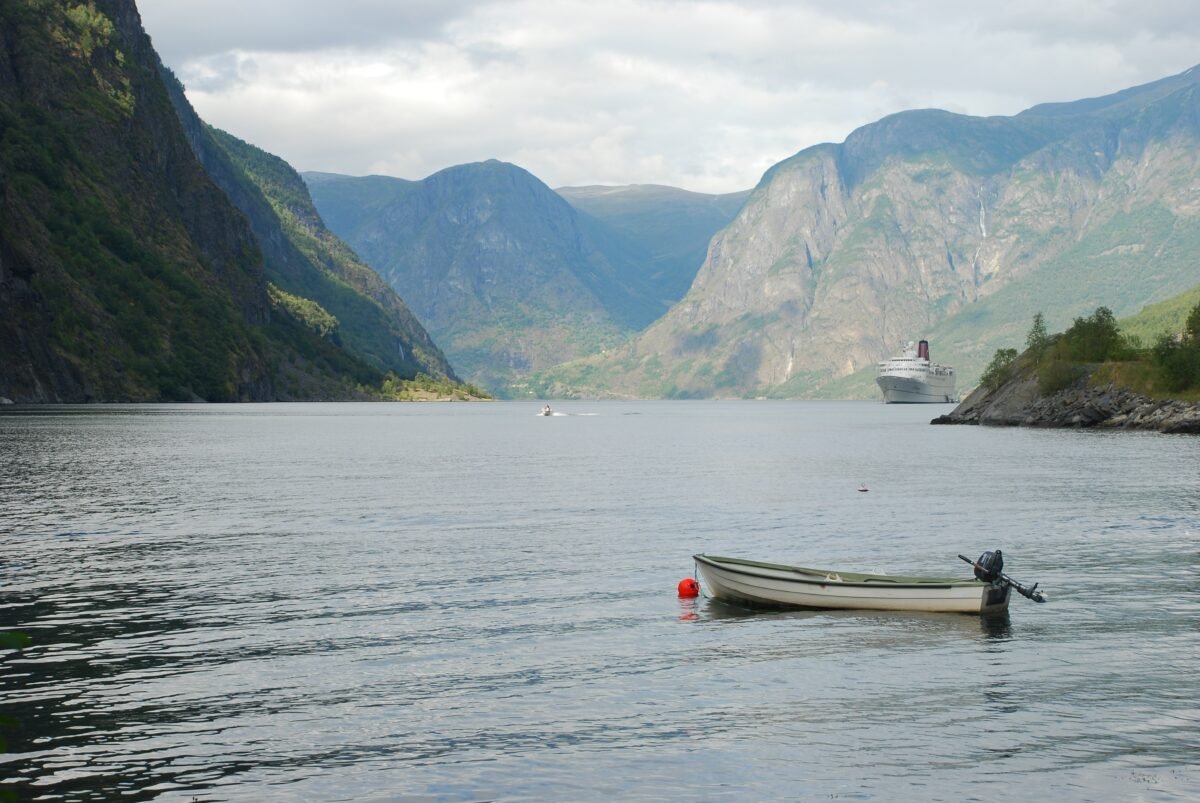
On your second day in Flåm, you’ll experience the fjord in a different way.
Kayak along the fjord
Njord Kayak operates from Flåm Beach and offers kayak hire and guided kayak tours. If it’s your first time in Norway, it’s best to join a guided kayak tour.
The guided tour lasts three hours and is a great way to spend your second morning in Flåm. As you kayak along the left-hand side of Aulandsfjord, you’ll be blown away by the magnitude of the fjord and the jaw-dropping natural beauty surrounding you.
Kayaking along the fjord is definitely a bucket list experience to tick off while in Norway.
Soak up the view from Stegastein
After experiencing the fjord by boat and kayak, one of the best things to do is marvel at it from above at the Stegastein Viewpoint.
A steel and wooden structure expanding out from the mountain above Aurland, the Stegastein Viewpoint offers expansive views of Aurlandsfjord and out past the headland into Sognefjord (the longest and deepest fjord in Norway).
Standing at the viewpoint, you’ll get a new appreciation for the Norway fjords and how vast and beautiful they really are.
Day 8: Flåm to Oslo
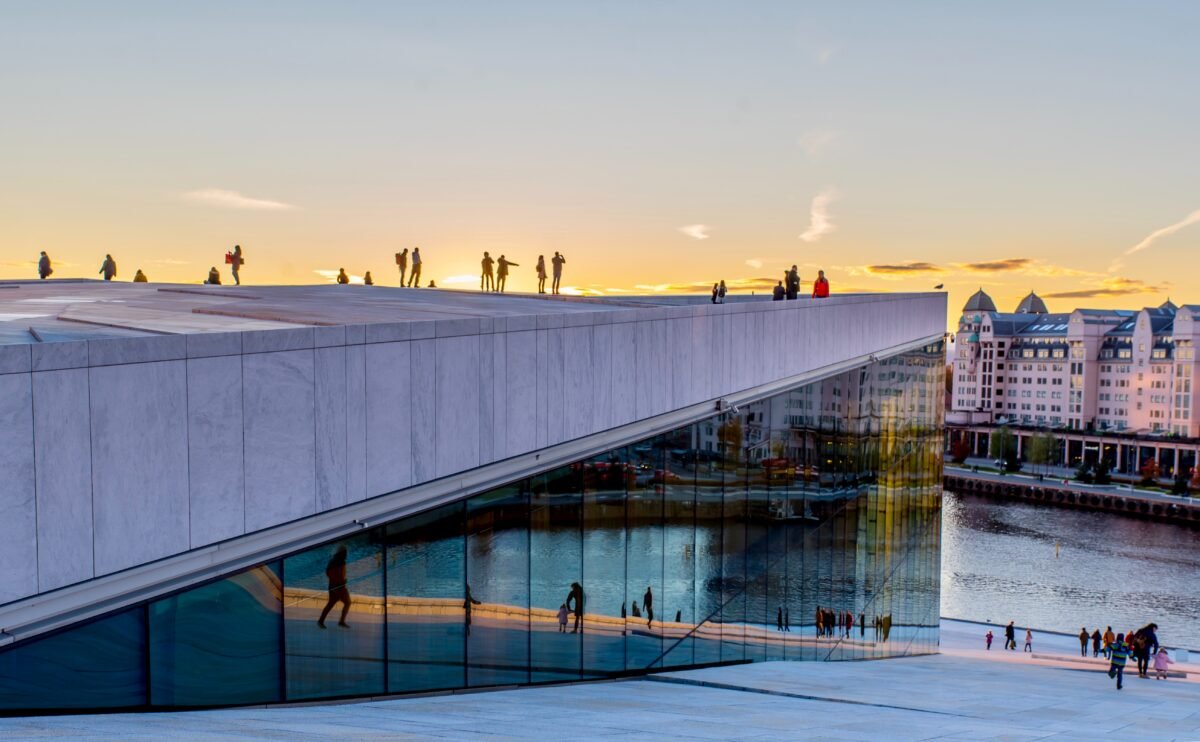
Just because it’s your last day in Norway, it doesn’t mean that you’re finished with seeing magnificent sights!
The four-and-a-half-hour drive from Flåm to Oslo is one of the most beautiful drives in the country. Along the way, you’ll drive through tunnels, pass medieval churches, mountain passes, dramatic fjords and national parks.
Depending on how many stops you plan to make and what time your departing flight is, you can leave Flåm at around 9 am and spend the day making your way back to Oslo, stopping at the beautiful sights along the way.
Once you arrive in Oslo, it’s time to drop off your rental car and head to the airport for your flight.
From dramatic fjords to breathtaking lookouts and majestic waterfalls, there is so much to love about Norway.
This eight-day itinerary is the perfect way to see the best of the country, especially for first-timers.
When will you experience this epic eight-day Norway itinerary?



